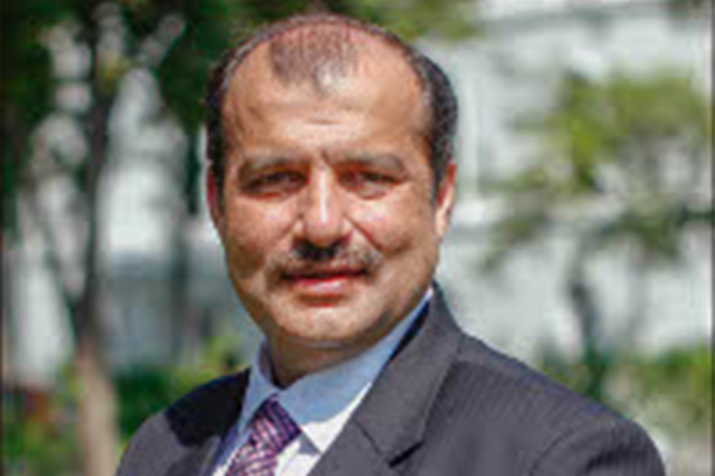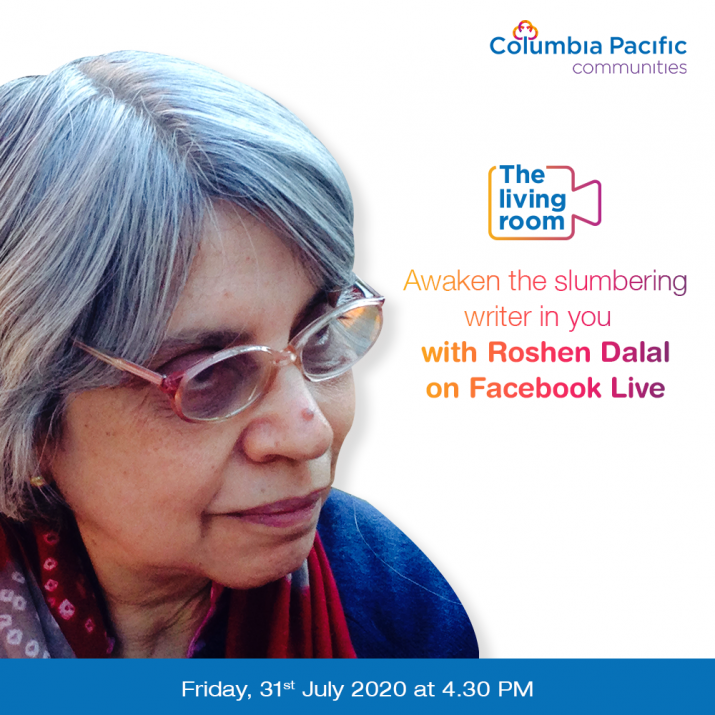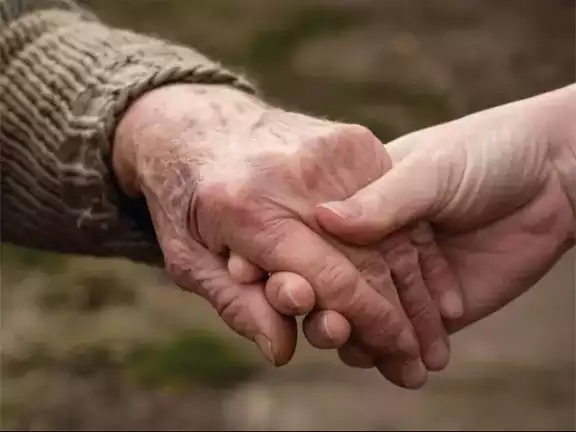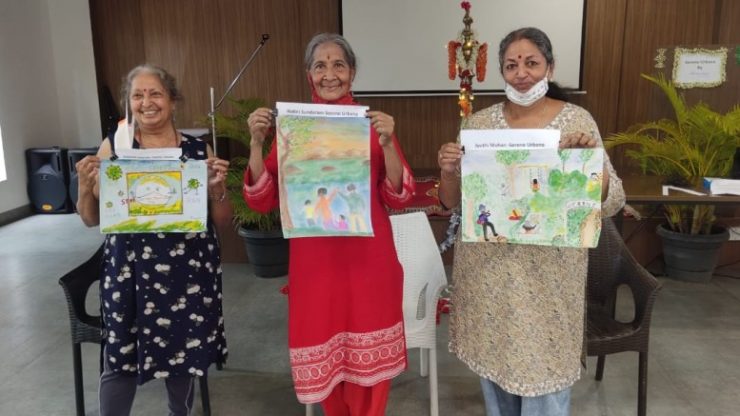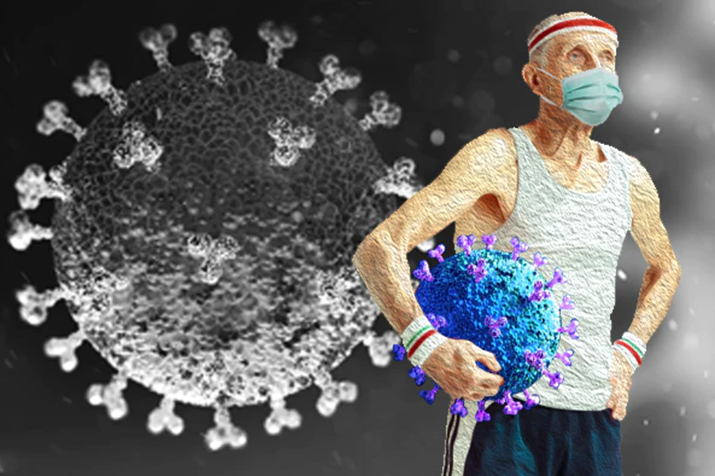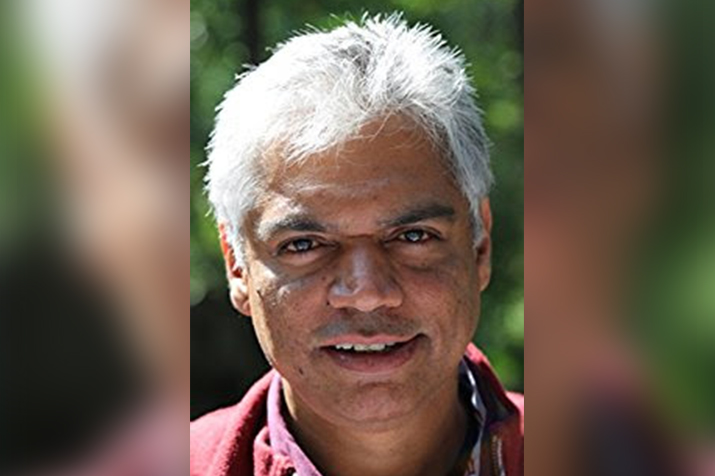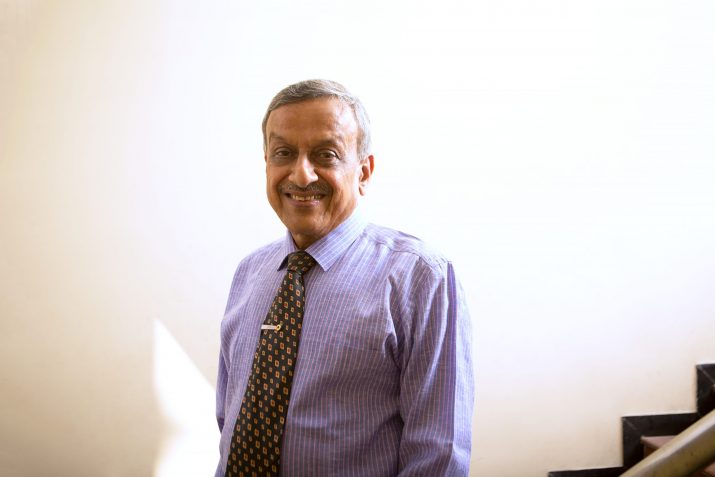The unprecedented-in-a-lifetime COVID-19 lock-down has tested everything imaginable, and perhaps the most important community that every heart sends out a prayer for, is the seniors — whether related to us or not — because of their greater vulnerability to the deadly virus. In the given situation, Riyaan Shaikh reached out to Piali Dasgupta, Vice President – Marketing of Columbia Pacific Communities – the largest senior living community with 1600 homes in 9 communities in 5 cities. Columbia Pacific Communities is a part of the Columbia Pacific Group, one of the foremost developers of senior living communities in the United States and South East Asia. and promoters of Columbia Asia Hospitals – the pioneering healthcare service provider with 13 hospitals in India that have established new standards in high-quality medical care. Given that the novel corona virus has most affected the seniors, this exclusive interaction with Dasgupta explores the effect of the pandemic on senior living, how it is likely to affect people, businesses and marketing, and how Columbia Pacific Communities been doing its part in providing the best protective nurturing and care for all the seniors living in its communities. The conversation also touches upon tough areas like ageing and the unfortunate taboo attached with senior living, and more. Read on for Piali Dasgupta‘s excellent and enriching insights and empathetic approach to the entire subject and to her custodianship of the marketing communications of Columbia Pacific Communities in India. This is definitely a save-and-return to discussion that will benefit students and practitioners of the strategy and business of marketing and branding alike RIYAAN AHMED: You have professionally been a part of many sectors, from marketing and content for known fashion brands like Myntra to CPC , your journey has been quite dynamic what was it about CPC that made you venture here? PIALI DASGUPTA: I think I had reached a stage in my career where I was not keen to be pigeon-holed into one category and wanted to look beyond fashion. As much as I love fashion and the business of it and owe a lot to it, there was a need to explore something that would challenge me sufficiently, while ensuring there was a steep learning curve. At the same time, it had to be a category that was high on EQ, empathy around which a compelling narrative could be built. So, it wasn’t really about picking up any category outside of fashion. Senior living, as a concept, excited and intrigued me at the same time. It was a new concept in India, and there was a rare opportunity to not just build a brand from scratch (and when I say scratch, I truly mean it, because at the time that I joined, the brand did not have a name or an identity), but also a category. Columbia Pacific Communities is solving a large problem in the country. The razor sharp focus on serving seniors and provide a solution to a hugely underserved market in India is what attracted me to the role. Ageing is an unpalatable topic, not just in this country, but the world over. No one wants to grow old, and brands, pop culture and the media doesn’t want much to do with the silver generation. So a population of 116 million in this country is tremendously underrepresented: Piali Dasgupta CPC is still relatively new to India, what is the groundwork that goes in to make a strong foothold in India? The groundwork includes extensive market research – both qualitative and quantitative, to understand need gap, demand patterns, the senior demographic and the key problems they are looking for a solution for. Research not only helps us identify the markets and the regions in India “ripe” for the solution, but also helps us gauge the product mix and pricing. This is then followed by a study of category players – their strengths and weaknesses which helps us arrive at key differentiators as a brand and a product offering. Tell us about the arrival of CPC in India, its growth, the model of operation, the number of cities it is present in, and how many families are staying in your communities. Columbia Pacific Management, our Seattle-based parent company, acquired Serene Senior Living in 2017. The acquisition was done with the primary intention of understanding the senior living market in India. A new registered company, Columbia Pacific Communities, was formed in 2019 which currently operates 9 communities across five cities in India looking after 1600 homes and almost 3000 senior citizens. The communities are spread across Chennai, Bangalore, Puducherry, Kancheepuram and Coimbatore. We have recently launched our 10th project in Bangalore, which is our signature offering and the country’s first senior living community designed to International standards. This will be a one-of-a-kind senior living community and will be ready for occupation tentatively by 2022. CPC’s core proposition revolves around ageing, a fact not everyone wants to talk about; especially not in their prime years. So how does one have that conversation and more importantly how does one target customers? This is a great question. Ageing is an unpalatable topic, not just in this country, but the world over. No one wants to grow old, and brands, pop culture and the media doesn’t want much to do with the silver generation. So a population of 116 million in this country is tremendously underrepresented. CPC as a brand, wanted to give voice to our seniors and make them more “visible” and make them part of mainstream conversations. The idea was to celebrate ageing in all its glory and that gave birth to our brand credo of “positive ageing: Piali Dasgupta Positive ageing is a new concept in India. It stands for active ageing and reinforces the idea that age, in fact, is just a number and you are as old as you feel. We wanted to see if we could make “ageing” look cool, and something to embrace gracefully with open arms. Towards this, we launched an award winning campaign titled ‘RELEARN’ in June 2019 that not only challenged age-related stereotypes and shattered ageism but also started a very positive dialogue around what it means to be a senior today. The campaign reached over 3 million people, received several awards including the very prestigious Ayaz Peerbhoy Memorial Awards at the Big Bang Awards last year and also helped us strengthen our positioning and have a meaningful conversation with our primary target audience. We also organized south India’s first senior citizens flash mob in Bangalore in the week before Christmas, where a group of nine senior citizens danced to Christmas songs and spread Yuletide cheer. This made a strong statement – that seniors could do whatever they wished to and age is not a deterrent, but in fact, an enabler. As a brand, we are committed to spreading the message of “positive ageing” far and wide and continue to take this narrative forward with various such initiatives. CPC Initially came to India through the southern cities. Why was that route chosen? Too much brain drain of professionals and wistfulness of parents left behind? Well, as I explained before, we acquired a company that was operational in the south. And it is also true that south India has a high demand for senior living communities. Cities such as Coimbatore, Puducherry and parts of Kerala are key markets. Traditionally, south India has seen significant brain drain to the US, Middle East (Dubai), South East Asia (Singapore, Malaysia) and Australia. A large number of IT professionals, and arguably the country’s best, have left India to make successful careers offshore, leaving aged parents that find themselves without a robust support system. And that’s where we come in. Having said that, the concept of senior living is gaining popularity in other parts of the country as well, with huge demand in Delhi/NCR, Pune and Kolkata. CPC’s is a holistic approach to help seniors live healthier for longer and age positively. Loneliness has been proven to be the single biggest killer, particularly in one’s advanced years. Community living backed by a well-planned lifestyle in a safe and secure environment, helps greatly to overcome loneliness in advanced years and enhance the quality of the lives of seniors: Piali Dasgupta What role does CPC play to enhance the senior’s community and lifestyle? At Columbia Pacific Communities, we have a three pronged approach to help seniors age positively. We look after their physical wellbeing through various physical activities and nutritious meals, their mental and emotional well-being by ensuring they are actively engaged in a community filled with like-minded people, and their intellectual wellbeing by meaningfully engaging them in a host of events and activities that help them remain intellectually stimulated, while allowing them to showcase their skills and talent. So, it’s a holistic approach to help seniors live healthier for longer and age positively. Loneliness has been proven to be the single biggest killer, particularly in one’s advanced years. Community living backed by a well-planned lifestyle in a safe and secure environment, helps greatly to overcome loneliness in advanced years and enhance the quality of the lives of seniors. What are the major challenges of the senior living, or we’d rather say, senior care business in India? Also, what opportunities are there? I would speak mostly about senior living here. The primary challenge is to fight the stigma attached to senior living as a concept. It’s still a taboo subject in our country and a conversation that a parent and a child find difficult to have sitting across the table. Children fear that making their parents stay in a senior living community would be seen as abandonment, when it is actually quite the opposite. Besides, “senior living” as a concept, has often been likened to “old age homes” and the dreary image of the latter: Piali Dasgupta Children fear that making their parents stay in a senior living community would be seen as abandonment, when it is actually quite the opposite. Besides, “senior living” as a concept, has often been likened to “old age homes” and the dreary image of the latter. This is unfortunate, because senior living communities are a lifestyle choice; they are NOT old age homes, where people live more out of compulsion than out of choice. There is also lack of awareness around the product offering itself, given how new the category is. There is also some amount of hesitation in seniors to invest in an asset quite late in their lives. Senior care is a sunrise industry in the country. It needs robust government support and policy changes to thrive and make real impact. Not to forget, a lot of support from the media to raise awareness around it and make it a mainstream category and business. It will take a couple of unicorn start ups in this category to make this a mainstream business and also a desirable career option for the top talent in the country. The COVID-19 pandemic was a health disaster that affected all of us but the seniors were at the greatest risk. How has CPC tackled that? How has it kept both, the seniors, and the care- and lifestyle-givers safe and secure? This was a massive challenge, no doubt, given the demographic we deal with. We deployed stringent protocol across our communities and till date, do not allow any visitors to come inside the community. This helped us remain COVID-free to a large extent. On care of their senior wards during the ongoing COVID outbreak: it was also crucial for us to ensure that seniors were not feeling lonely, anxious and hopeless during these trying times and their mental health was not greatly affected due to physical distancing. Using technology, we ensured that they were connected to their loved ones. We also had counsellors that they could call if they were feeling distraught and under stress: Piali Dasgupta Our frontline teams did an exemplary job rising up to the situation and ensuring frequent and thorough sanitization, door step delivery of essentials including bringing in ATM machines inside the community so that seniors can stay locked in. We also ensured that strict anti COVID protocols laid down by WHO including wearing a PPE, maintaining social distance and fumigating and sanitizing the communities were followed at all times. Residents were asked to strictly adhere to social distancing norms, all community events that involved a gathering of large number of people were cancelled and immunity building diet was served by our F&B teams. However, it was also crucial for us to ensure that seniors were not feeling lonely, anxious and hopeless during these trying times and their mental health was not greatly affected due to physical distancing. Using technology, we ensured that they were connected to their loved ones. We also had counsellors that they could call if they were feeling distraught and under stress. Brand initiatives such as The Living Room, a virtual chat show on Facebook, that invites luminaries and experts from different walks of life (Nandita Das, Kabir Bedi, Charu Sharma, Prahlad Kakkar, Dolly Thakore to name a few) and digital talent showcase platforms ensured they were positively and meaningfully engaged while staying indoors. Your key TG for marketing your service is the well settled children of the seniors, right? How are you reaching them – what channels do you use. Also, another important segment would be the seniors themselves. Just as kids have great pester power in the buy decisions on all household items, cars and holidays etc. But by and large, elderly people are difficult to market to and to have a conversation with on social media. And now, with conventional methods taking a backseat due to the pandemic, how have you driven marketing through all this? Our primary TG is the customer himself – ie a senior citizen who is either close to retiring or has retired already and is looking for a solution for himself/herself. Our secondary TG is the children of the primary TG, who are away from their parents and are looking for a solution for their parents to ensure they as well as their parents lead a worry-free life. It is true that the children of the seniors are an important stakeholder in the purchase decision, and hence our communication is targeted to younger audience living in India and abroad as well. Our marketing strategy has always been digital first given that it allows us precise interest and age-based targeting, but also lends itself well to brand stories and brand narratives that we want to build to raise awareness. We have always used OOH and at times television as a secondary/supplementary channel. In television, we have tried seniors only subscription led channels such as Tata Sky Seniors to reach out to our core TG, as also a more mainstream option such as Star Plus. This apart, we also do events and associations as part of our BTL efforts. However, our business leads primarily come through digital channels such as Google and Facebook. With all the safety checks and care for your senior families, you must have had a great track record during covid-19, and even though this has been the worst and most tragic time in living human memory, has it given you an opportunity to showcase how effective and really desirable, even essential for those who love their parents/seniors, the CPC service is? What’s been your record of senior safety from COVID, leaving aside any unfortunate happenings due to natural causes? COVID-19 has resulted in heightened interest in the category as seniors have realized the importance of living in a safe, secure, fully services community as opposed to living alone where they have to fend for themselves even in the face of a pandemic: PIali Dasgupta Yes, it has. COVID-19 has resulted in heightened interest in the category as seniors have realized the importance of living in a safe, secure, fully services community as opposed to living alone where they have to fend for themselves even in the face of a pandemic. Whether it was doorstep delivery of essentials, or even arranging for a haircut amidst the lockdown, our frontline workers have done an incredible job of ensuring that our residents don’t feel the impact of the lockdown and the pandemic. Needless to say, the children of our residents, have been relieved and in comfort knowing that their parents are in safe hands. With the use of testimonial videos, images from the communities of our frontliners taking care of residents to the best of their abilities, we have been able to showcase the need and the importance of a solution like ours. As for our senior safety records, we have been able to ensure than more than 99% of our residents are protected from the virus till date, owing to strict protocols and superior crisis management strategies. How is a communication strategy for senior citizens different from that for a younger target group? I think more than the communication strategy itself, it’s the platform or the channels that one uses to reach out to a senior audience vis a vis a youth audience that differ. Having worked with youth brands before, one knows that emerging social media platforms such as the now banned Tik Tok, for instance, is a more favoured channel, than, let’s say Youtube. Or print would be a less favoured option compared to, let’s say OTT platforms, to target them. In terms of communication strategy and content per se, seniors tend to have a comparatively higher attention span than the millennial audience. And they have great appetite for good quality content – irrespective of the length of it. So there isn’t a constant pressure to grab their attention in the first three seconds: Piali Dasgupta With seniors, one has to understand that they are late adopters of technology. Having adopted it quite late, most of them appreciate the many boons of it. However, they are necessarily available on all digital channels such as Instagram or Pinterest. Our focus, therefore, has been on Facebook as the primary channel of communication in the digital sphere, followed by Youtube. In terms of communication strategy and content per se, seniors tend to have a comparatively higher attention span than the millennial audience. And they have great appetite for good quality content – irrespective of the length of it. So there isn’t a constant pressure to grab their attention in the first three seconds. If you serve them content that is meaningful, relevant and helpful for them, they would engage with you. Our content landscape covers everything that today’s senior is interested in – from long forgotten hobbies to reading lists and Netflix watch lists to quizzes and more. There is also a judicious use of “nostalgia” as an emotion, which works very well for this audience. Ultimately they are looking for meaningful content, as opposed to ephemeral content, which a lot of youth audience tend to consume. Covid -19 has changed life as we know it. How do you think these change would impact business and marketing when we adapt to the new normal? Well, I wouldn’t say that there will be a drastic shift in how brands would communicate and market their products. By the next quarter, pressure will mount to make up for the lost time and chase revenue goals. So, sooner than later, brands would have to go back to product driven marketing. Having said that, brands would increasingly focus on gaining customer trust back. At least for the next three to four quarters, brands across sectors from hospitality, F&B, retail to aviation and real estate, would continuously communicate safety and hygiene measures adopted by them along with ensuring a mostly contact free customer experience/journey. Marketing will see a shift in medium – digital adoption and dominance would be imperative for survival for brands. Most brands will shift their offline, specifically OOH, budgets to digital, because for some time at least, people will continue to limit their exposure to the outside world… It will most likely be a no-frills, KPI-driven approach to marketing for some time at least, as marketers would have to work with reduced budgets, so there will be a need to innovate, be nimble and creative in order to achieve maximum results with minimum cost inputs: Piali Dasgupta Marketing will also see a shift in medium. Digital adoption and dominance would be imperative for survival for brands. And most brands will shift their offline, specifically OOH budget to digital, because for some time at least, people will continue to limit their exposure to the outside world. Spends will be reduced on print because a large section of the population believe that newspapers carry the virus and hence have stopped taking newspapers at home. The budgets for print will be shifted to television as people are watching more television than ever as they are self-quarantined/socially distanced and the TV consumption went up by 38% during the lockdown. There will largely be a no-frills, KPI driven approach to marketing for some time at least, as marketers would have to work with reduced budgets. So there will be a need to innovate, be nimble and creative in order to achieve maximum results with minimum output. Businesses that solve real customer problems and ease their day to day challenges using technology as an enabler will ultimately thrive. Do you see a stronger and more permanent part-shift of marketing budgets towards digital mediums for campaigns and communication strategy after COVID? What changes do you expect in communication strategy that will stay with us? COVID-19 has been the real catalyst in the digital transformation in the country. Almost all digital KPIs have seen a massive uptake across demographics in the past three months – from average time spent on platforms to the number of downloads. As for changes in communication strategy, given what the world has gone through in the last few months, there will be increased focus on creating communication around hope, human connection, kindness, gratitude and empathy as the key sentiments for brand narratives: Piali Dasgupta Obviously, this has led to brands shifting a large chunk of their offline budget to digital media. This, coupled with a drop in both CPM and CPC pricing on platforms such as Facebook by 50% and 19% globally, has led to brands across categories such as FMCG, real estate and edutech, who are looking at getting the best returns from their marketing investments given the budget cuts. This trend will continue at least for the next three quarters, irrespective of whether the economy sees a V shaped or an U shaped recovery. A KPMG report says that COVID-19 will not have a long term impact on print advertising. In the short and the medium term though, as marketers continue to be in a “wait and watch” mode, print advertising will suffer. Marketers would consider display advertising using a CPM /CPC model on the web versions of publications in the medium term. As for changes in communication strategy, given what the world has gone through in the last few months, there will be increased focus on creating communication around hope, human connection, kindness, gratitude and empathy as the key sentiments for brand narratives. Examples of this include Swiggy’s campaign to thank the delivery boys who tirelessly deliver food and essentials to customers to Coca Cola’s Ummeedon Waali Dhoop and Asian Paints’ #stayhomestaysafe campaign, “Seniors in Command”, a campaign by Columbia Pacific Communities, to salute seniors who have gone beyond their calls of duty and during these troubled times, brand communication was certainly very high on EQ the past few months. What kind of marketing strategy do you employ for business growth? How important a role does direct marketing play here? We follow the classic model (Awareness – Interest- Desire -Action) to propel business growth. What this means is that we first focus on creating enough awareness on the category at large and the brand in particular. This is done through a mix of offline and online channels along with PR efforts. Once awareness is built, we initiate product marketing that highlights key differentiators and the promise of a “zero headache life” for our seniors in our communication. We have a complex target audience that includes two generations, we rely heavily on digital marketing for effective targeting and a more scientific approach to calculating ROI compared to offline channels. Digital also allows us to be cost effective, which is a requirement for a marketing team at any growing start up. Therefore, direct marketing plays a significant role in getting us the right leads and growing the business. Do you also have corporate tie-ups with top corporates to include senior care as part of the perks so their key leaders and professionals can work stress-free? Alliances and tie-ups are part of the roadmap for this year and the coming years. We have already collaborated with a bunch of senior care brands including Seniority, Hearfon, Dozee, Oncierre, Empowerji for various activities. We would be looking at corporate tie ups in the near future. Since the lockdown was announced people have broken away from their routine life and have now started to pay more attention to their needs and products that provide value. With this in mind, do you see a shift from direct selling to a more empathetic approach taken by brand to reach out to their consumers? What considered advice would you give young marketing professionals? Marketers need to be hyper aware, hyper sensitive and have their ears to the ground to avoid sounding tone deaf or cloth-eared during these troubled times: Piali Dasgupta This is a great time to build awareness if you are an emerging brand or create salience and “top of mind” if you are an established brand, because consumers are consuming more content than ever on digital platforms. And the only way to do this is through effective storytelling and a noble intent. Brands must ensure that communication is in line with the crisis at hand. Marketers need to be hyper aware, hyper sensitive and have their ears to the ground to avoid sounding tone deaf or cloth-eared during these troubled times. This is not the time to do a “CORONA sale” and try to capitalise on a pandemic. Brands can’t afford to be irresponsible and insensitive towards certain sections of society. A classic example of a brand communication strategy going horribly wrong was the Kent RO ad. So, my advice to young marketers would be to step back, hit the reset button, think, rethink, study and understand consumer sentiments, and then build a strategy that is a win-win for the brand as well as the end user. How much, if it does, does CSR drive you? I have always said that the most successful brands are those that are purpose driven and go beyond just selling a product. CSR, particularly in the current scenario, is a very crucial component of “brand purpose” and one that ultimately does result in brand love. We are aware of this and would be focusing on creating a robust CSR plan in the future. However, currently our energies are focused on building the most preferred senior living option in the subcontinent.
Continue reading “EXCLUSIVE: Piali Dasgupta, VP Marketing CPC on the beloved Seniors it serves”

